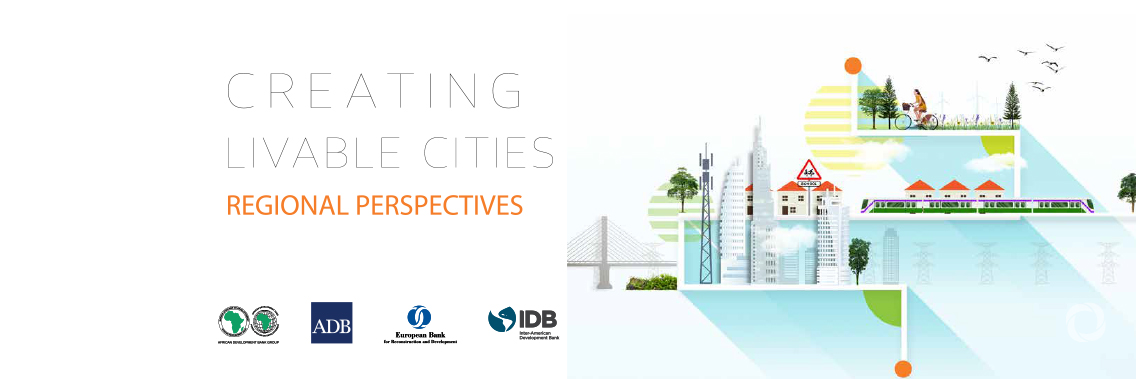Rapid urbanisation has provided most cities in the world with opportunities to provide more sustainable, vibrant, and prosperous centres for their citizens. But they must first address challenges such as inadequate infrastructure investments, pollution and congestion, and poor urban planning, according to a new report.
The report, Creating Livable Cities: Regional Perspectives, looks at urbanisation trends across emerging and developing economies in Africa; Asia and the Pacific; emerging Europe, Central Asia and the Southern and Eastern Mediterranean; and Latin America and the Caribbean. It is a joint publication by four regional development banks (RDBs) operating in these regions—African Development Bank (AfDB), Asian Development Bank (ADB), European Bank for Reconstruction and Development (EBRD), and Inter-American Development Bank (IDB).
“Action by cities represents one of the greatest opportunities meaningfully to address climate change, air pollution and environmental degradation,” said EBRD President Sir Suma Chakrabarti. “Globally, they account for around 70 percent of energy use and three-quarters of greenhouse gas emissions, and these figures are set to rise. Cities host most of the infrastructure vulnerable to climate change. But realising that potential requires flexibility, careful planning and good governance.”
President Chakrabarti took part in a launch event at the IDB headquarters in Washington, D.C., with the presidents of the other three development banks: Akinwumi Adesina of AfDB, ADB President Takehiko Nakao and Luis Alberto Moreno of IDB.
The world’s urban population has grown from just 750 million in 1950 (or 31 percent of the total population) to 4.2 billion in 2018 (55 percent of the total population)—a number that is estimated to reach 5.2 billion in 2030 (60 percent of the total population). While the majority of leading economic hubs are still in advanced economies, the center of economic activity is moving toward the developing and emerging markets, the report says. Asia and Africa will account for 90 percent of urban population growth between 2018 and 2050, with more than a third of this growth to happen in just three countries—the People’s Republic of China (PRC), India, and Nigeria.
Although large and still dominant, megacities of more than 10 million people and national capitals are not the fastest-growing urban areas. Urban areas with fewer than 1 million residents account for 59 percent of the world’s urban population and are experiencing a faster growth rate across the regions, the report says.
Cities need large-scale investments to develop and maintain infrastructure and services such as urban transport, water supply, sanitation, and solid waste management. In the face of rapid growth, overstretched services, skills shortages, and increased vulnerabilities to disasters are adding to cities’ environmental stress.
The publication examines the types of policy interventions and approaches needed to promote competitive, inclusive, equitable, and environmentally sustainable and climate-resilient cities—four factors that taken together make cities “livable.”
Read and download the report: Creating Livable Cities: Regional Perspectives.
Original source: EBRD
Published on 18 October 2019

